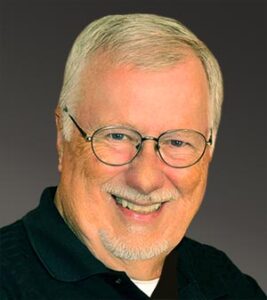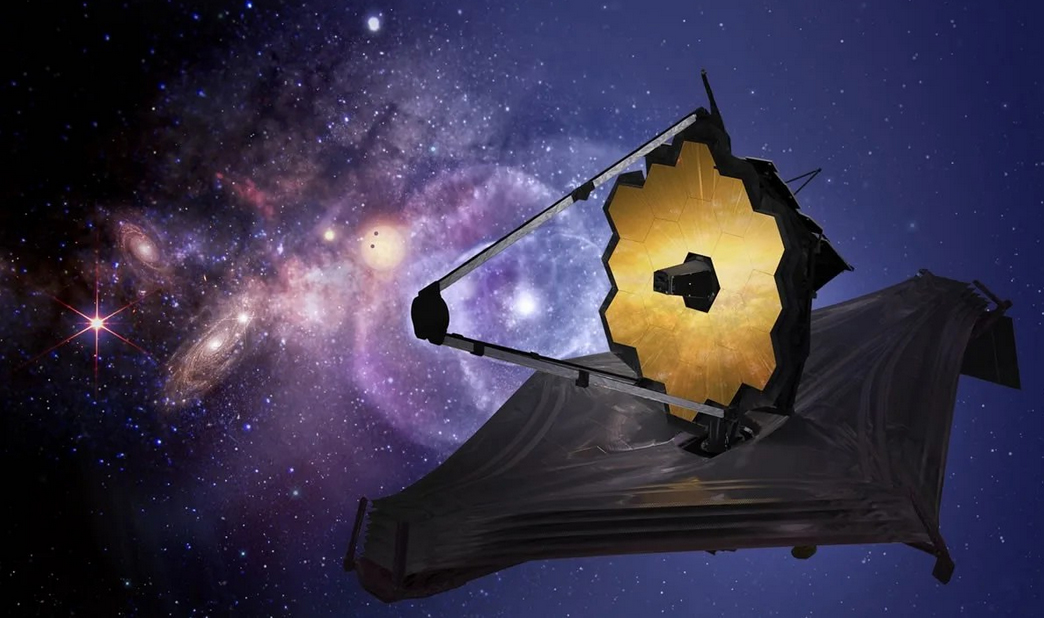— JB Varner
The spaceship traveled through the vast emptiness of space for nearly a month before arriving at its destination. By comparison, Apollo astronauts traveled for 2 and a half days to reach the moon.
Its original boost was just enough to throw the craft all the way to its final home. Of course, there were minor thrusts to fine tune the trajectory, but the calculations and engine burns were so efficient, that the life of the mission was extended due to the fuel savings that would have gone into additional course corrections.
But this voyage did not start with the launch atop a powerful rocket. The story of this adventure begins in 2013 at NASA’s Goddard Space Flight Center Greenbelt, Maryland where individual pieces of the craft started to arrive. After assembling the craft for four years, the spacecraft was sent to Houston to test its thermal resilience. Finally, the craft went to California where the various components were tested over a three-year time frame for operational readiness.
After all the testing was completed, the spacecraft was loaded onto a cargo ship for the 5,800-mile voyage to French Guiana in Oct 2021.
The spacecraft, named after former NASA administrator James Webb who oversaw the Mercury, Gemini, and Apollo programs, was launched into space on December 25th 2021.
So this is the fascinating journey of the James Webb Space Telescope (JWST), one of the most complex spacecraft ever built, entering orbit around a special point in space known as Lagrange Point 2 (L2).
A Lagrange point is where the gravitational forces from the Earth and the Sun are equal. There are five of these special places, where spacecraft can maintain their positions using very little fuel.

JWST is the largest space telescope ever launched. This large mirror size (around 21 feet diameter) required that the spacecraft be folded up origami style to fit into the payload shroud for launch.
During the journey, the JWST began unfolding–deploying solar panels, an antenna, and a massive 5-layer sun-shield. Finally, the spacecraft deployed its primary mirror, 18 gold plated hexagonal segments.
Since the James Webb Space Telescope (JWST) came online in 2022, surprising images have changed our understanding of how the early universe developed, posing significant challenges to astronomer’s standard model of cosmology. In particular, the JWST is forcing scientists to develop new models for galaxy and black hole formation.
To understand the science behind the design of the telescope let’s start with some background.
The wavelength of visible light from objects in the early universe is transformed by traveling through space, which is expanding. This expansion stretches the wavelength of visible light into the infrared portion of the electromagnetic spectrum which is normally beyond our ability to see. Infrared light is basically a form of heat.

If you have attended a professional sports match and watched players enter the stadium between towering jets of flame, you can feel the infrared waves on your face a moment later. Because the JWST is extremely sensitive to this type of radiation, it must be carefully shielded from unwanted sources like the sun. During its flight, the JWST was always in the shadow of its tennis court sized sun-shield to prevent damage to sensitive instruments and cameras.
So, in order to see distant objects from the early universe, whose visible light has been stretched into the infrared, a telescope cannot look at visible light but instead must record infrared light. Unlike the visible light utilized by traditional telescopes and by the Hubble telescope, JWST was specifically designed to capture infrared wavelengths.
By recording infrared light, astronomers can ‘see’ further away and therefore farther back in time to the universe’s infancy. This is why some refer to the JWST as a “time machine”. The early results from the JWST were startling.
Science is typically a very iterative process and new information allows scientists to incrementally refine their theories. Images from the JWST present another story entirely. Theories and computer models regarding galaxy formation in the early universe are being completely upended.
Scientists have determined that the universe is 13.8 billion years old. Using the JWST they have found extremely large galaxies when the universe was quite young. The observation of these massive objects is radically changing our concepts of galaxy formation. Data from the JWST‘s infrared-sensing camera was used to picture the universe as it looked 13.5 billion years ago—in essence, baby pictures of the early universe.
According to current theories, dust clouds slowly condensed to form stars, which in turn clustered from gravitational forces to form galaxies. But this concept doesn’t account for the massive size of these young objects. Astronomers are working to develop new theories that account for the rapid growth of these young galaxies.
Here is an example of the scientist’s subtle way of describing the disconnect with existing theories:
“The first observations of the James Webb Space Telescope (JWST) have revolutionized our understanding of the Universe by identifying galaxies at red-shift z ≈ 13. In addition, the discovery of many luminous galaxies at Cosmic Dawn (z > 10) has suggested that galaxies developed rapidly, in apparent tension with many standard models”. (Stefano Carniani ,Nature, July 29 2024).
An international collaboration of more than eighty astronomers from ten countries formed the JWST Advanced Deep Extragalactic Survey (JADES). “For the first time, we have discovered galaxies only 350 million years after the big bang, and we can be absolutely confident of their fantastic distances,” shared co-author Brant Robertson from the University of California Santa Cruz, a member of the science team.
The scientists used the JWST to observe a distant galaxy for 10 hours to obtain enough light to perform a spectroscopic analysis. The results were indeed surprising. The galaxy being studied was determined to be around 1600 light-years across and had a red-shift of 14.32, shattering the previous distant galaxy records.
“All of these observations, together, tell us that the galaxy is not like the types of galaxies that have been predicted by theoretical models and computer simulations to exist in the very early universe” says Robertson. Longer exposures and expert analysis by astronomers will yield more surprising discoveries. Stay tuned for amazing new revelations as the JWST continues its ongoing voyage back in time!

From Amherst, Ohio., Jim studied Microbiology and Physics at the Ohio State University. His early career involved cancer research at the University of Colorado School of Medicine and developing monoclonal antibody diagnostics at Syngene Inc., a pioneering biotech company. As a science enthusiast, he enjoys keeping abreast of science topics from astronomy to zoology. His goal in writing is to convey the complexities of technical subjects to a general audience. Follow Jim for more interesting insights into science.



One reply on “Sophisticated “Time Machine” thrown into the Cosmos”
Scientists rewrite theories of the Universe’s origins – Cactus Creative October 17, 2024 at 9:24 pm
[…] Development 4 min read […]
Comments are closed.